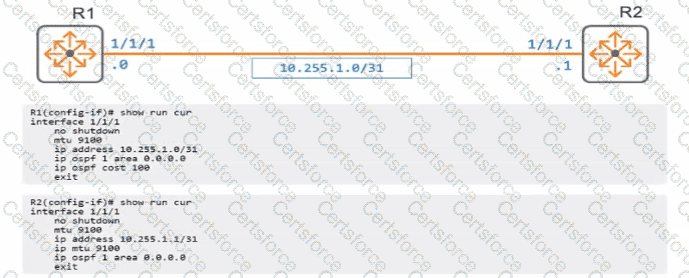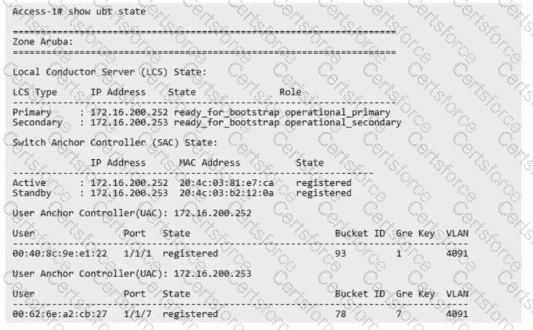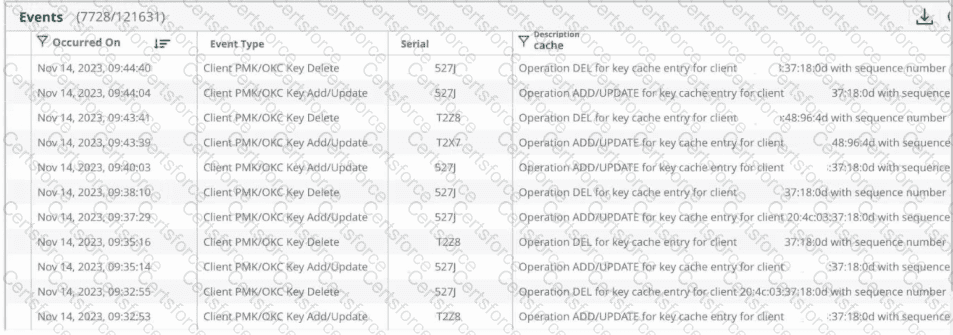Exhibit.

An engineer has applied the above configuration to R1 and R2 However the routers OSPF adjacency never progresses past the "EXSTART-DR" slate as shown below.

Which configuration action on either router will allow R1 and R2 to progress past the "EXSTART/DR" state?
Refer to the exhibit.

To which devices has AP-1 established tunnels?
In a WLAN network with a tunneled SSID, you see the following events in HPE Aruba Networking Central:

The customer asks you to investigate log messages. What should you tell them?
Refer to the CLI output below:

What statement about the output above is correct?
An existing AOS-10 wireless deployment is expanding its zero-trust wireless network to multiple locations. The requirement is to propagate role information to enforce group-based policies for wireless client traffic across all locations.
To achieve this goal, which must be configured in this infrastructure?
A customer has recently deployed a wireless system using AP-535S to provide connectivity for their employees who are responsible tor uploading large video files for review. The customer wants to use features that provide throughput gains for large data uploads.
Which feature can be enabled to meet the requirement and simultaneously allow spatially separated clients access to the channel?
Match each Group Based Policy (GBP) role description to its respective role ID.

Refer to the exhibit.

Which statement is true?
An ACME company employee complained about a recent poor-quality VoIP call while moving around their office environment HPE Aruba Networking Central reported a fair UCC score for this call while your VoIP engineer reported that their systems reported a MOS of 2, 3. The VoIP devices are operating over the 5GHz frequency band.
What are the possible contributing factors? (Select two.)
You are troubleshooting a WLAN deployment with APs and gateways set up with an 802.1X tunneled SSID. End-users are complaining that they can't connect to the enterprise SSID. Which possible AP tunnel states could be the cause of the issue? (Select two.)